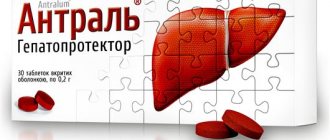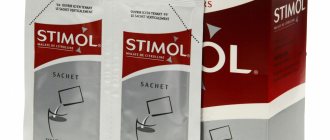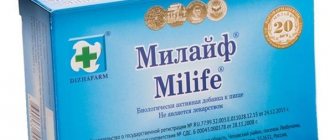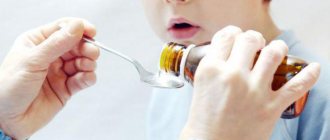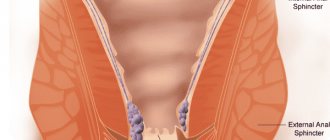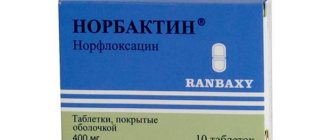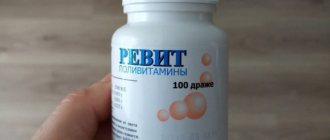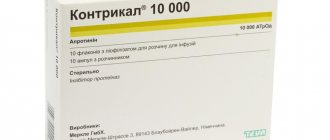Composition and release form
The medicine is available in several forms:
- pills;
- ointment;
- gel;
- candles;
- children's oral suspension.
The active substance is ibuprofen.
Auxiliary components in the tablets: potato starch, magnesium stearate, beeswax, sucrose.
Additional gel ingredients: ethanol, lavender oil, water.
Excipients in the ointment: macrogol.
Additional components of candles: solid fat.
Drug interactions
- It is not recommended to take ibuprofen with simultaneous treatment with other NSAIDs;
- When prescribed with anticoagulants, the risk of bleeding increases;
- When interacting with serotonin reuptake blockers, the risk of bleeding from the gastrointestinal tract increases;
- With simultaneous treatment with cephalosporins, the frequency of hypoprothrombinemia increases and the risk of nephro- and hepatotoxic effects increases;
- When treated with inducers of microsomal oxidation, the risk of intoxication increases;
- Barbiturates and drugs with ethanol increase the concentration of ibuprofen in the blood plasma;
- Reduces the effect of vasodilators, furosemide and hydrochlorothiazide;
- Increases the activity of antiplatelet agents, indirect anticoagulants, fibrinolytics, hypoglycemic drugs and insulin, sulfonylurea derivatives;
- Cholestyramine and antacids reduce the absorption of ibuprofen;
- Caffeine enhances the pain-relieving effect of ibuprofen.
When to take medicine
The medicine in tablet form is effective for the following conditions:
- inflammatory processes in the spine and joints;
- moderate pain of various origins (menstrual, headache, toothache, pain after surgery);
- fever caused by a cold infection.
Gel and ointment should be used in the following cases: osteoarthritis, arthritis, gout and other diseases of the musculoskeletal system.
Suppositories and syrup are usually prescribed to children to reduce body temperature, for various childhood infections and to reduce pain (in the head, throat, ear).
Capsules for adults and children
Each Ibufen capsule contains 200 mg of ibuprofen. In addition, the following are used as excipients:
- potassium hydroxide;
- macrogol;
- purified water.
The drug is presented in the form of blue capsules with liquid inside. For small patients, special capsules called Ibufen Junior are produced.
This medicine should also be taken during fever caused by various infections, influenza and sore throat (in children and adults), neuralgia, menstrual pain, headaches and toothaches. Capsules should not be used if a person has allergic reactions to certain components of the drug, as well as to non-steroidal anti-inflammatory drugs.
Regarding taking medication during pregnancy and lactation, you should definitely consult a doctor. During the first six months of pregnancy, treatment should only be done under the supervision of a doctor. You should not take Ibufen in the last trimester of pregnancy.
The drug, which passes into milk in small quantities, does not cause side effects in infants. But during lactation, doctors recommend not taking the medicine or refusing to breastfeed while the mother is undergoing treatment. Take the capsule with a small amount of water. The maximum permissible number of days of treatment is 5. If the drug does not relieve pain during this time or does not lower the temperature in three days, you should consult a doctor.
As for side effects, they are not observed during the first 3 days, but malaise may appear later.
How to take Ibuprofen
Pills
Adults and children over 14 years of age can be given no more than 4 tablets per day. Depending on the condition, the dose can be adjusted and increased to 6 tablets (the dose is divided into several doses). When improvement is noted, the dose should be reduced to the original. The first tablet should be taken in the morning before meals with a glass of water. Then take 1 tablet after meals.
Without consulting a doctor, tablets can be used for no more than 5 days.
Candles
The suppositories are placed rectally. For pain and fever, the dose is determined taking into account the age and body weight of the baby. You can use no more than 10 mg per 1 kg at a time. Candles can be lit up to 4 times per day. The optimal duration of use is 3 days. If suppositories are used as an analgesic, they can be administered for 5 days.
If after the allotted time the fever has not disappeared, then you should consult your pediatrician.
Gel
You can use a 5-9 cm strip of gel at a time. Using smooth, light movements, rub the gel into the problem area until the composition is completely absorbed. It is allowed to use the gel no more than 4 times per day, with repeated use no earlier than after 4 hours.
The duration of the treatment course can be 15-20 days.
Ointment
The scheme for using the ointment is in all respects similar to applying the gel. The drug is rubbed into the problem area of the skin 3-4 times a day. Can be used within 15-20 days.
Children's suspension
Ibuprofen in the form of a suspension can be given to a child no more than 3 times a day. If your child is under one year old, you should definitely consult a specialist before use. If the fever appears as a result of vaccination, then the suspension is given 2 times a day. There should be a break of at least 6 hours between doses.
pharmachologic effect
It has analgesic, antipyretic and anti-inflammatory effects due to indiscriminate blocking of cyclooxygenase (1 and 2) and inhibition of the synthesis of prostaglandins (mediators of inflammatory reactions). The analgesic effect is more pronounced for pain associated with inflammatory reactions. Like other NSAIDs, ibuprofen is characterized by antiplatelet activity (suppresses the aggregation of blood cells - platelets). With long-term treatment, a desensitizing effect is possible.
When used externally, it also has an active analgesic and anti-inflammatory effect. Normalizes vascular permeability, reduces the liberation of inflammatory mediators. Dimethyl sulfoxide, the second active component of the ointment, has a local nonspecific anti-inflammatory effect and enhances the penetration of ibuprofen into the affected tissues.
Pharmacokinetics
When taken internally, the drug is almost completely absorbed from the gastrointestinal tract, but when taken simultaneously with food, the rate of absorption slows down. When taken on an empty stomach, the maximum concentration in the blood is achieved after 45 minutes, and after a meal - after 90-150 minutes.
Metabolism occurs in the liver (up to 90%). After absorption, approximately 60% of the inactive R-form of the active substance is transformed into the S-form, which has pharmacological activity. It is excreted in the urine in the form of inactive metabolites (up to 80%), the rest is excreted by the intestines.
When applied externally, it practically does not penetrate into the systemic bloodstream. When it enters the joint cavity, it accumulates in the synovial fluid.
Contraindications and adverse reactions
Contraindications for all forms of medications include:
- stomach ulcers;
- problems with liver function;
- bearing a child (3rd trimester);
- internal bleeding;
- progressive kidney disease;
- chronic intestinal diseases;
- hypersensitivity to the constituent components.
It should be taken with caution for the following conditions and problems: liver cirrhosis, gastritis, stomach ulcers, problems with the cardiovascular system, liver and kidneys.
Children under 12 months can be given medicine only as prescribed by a doctor and under his supervision.
When using suppositories and tablets, the following adverse reactions may occur;
- irritation and dryness in the mouth;
- dyspnea;
- blurred vision;
- headache;
- confused thinking;
- disturbed sleep;
- high blood pressure;
- excessive sweating.
Side effects
- Gastrointestinal tract: gastropathy phenomena, expressed by abdominal pain, dry mouth, heartburn, nausea, vomiting, loss of appetite, diarrhea, flatulence, constipation. Occasionally, ulcerations of the mucous membrane of the stomach and intestines occur, with possible, extremely rare complications in the form of bleeding and perforation, as well as pancreatitis (these reactions are most likely with long-term treatment). On the part of the liver, hepatitis may develop.
- Respiratory organs: bronchospasm, shortness of breath.
- Sense organs: decreased hearing, ringing or noise in the ears, blurred vision, double vision, dry cornea, swelling of the eyelids and conjunctiva.
- Central and peripheral nervous system: dizziness, headache, sleep disturbance, irritability, confusion, depression, psychomotor agitation. In rare cases, people with autoimmune pathologies develop aseptic meningitis.
- Cardiovascular system: hypertension, heart failure, tachycardia.
- Excretory system: allergic type nephritis, acute renal failure, edema, cystitis, polyuria.
- Allergic reactions, which are also typical for external forms: skin rash such as erythema and urticaria, tingling, Quincke's edema, itching of the skin. Rarely - anaphylactic shock, exudative erythema multiforme, bronchospasm, allergic rhinitis, eosinophilia.
- Hematopoietic system: anemia, agranulocytosis, thrombocytopenic purpura, thrombocytopenia and leukopenia.
- Other reactions – increased sweating.
Laboratory indicators:
- Increased: bleeding time, serum creatinine concentration, liver transaminase activity.
- Decrease in: concentrations of glucose, hemoglobin, hematocrit, creatinine clearance.
Overdose
When the dose of the drug for internal use is significantly exceeded, the following symptoms develop: epigastric pain, drowsiness, vomiting, headache, tinnitus, metabolic acidosis, coma, drop in blood pressure, tachycardia, atrial fibrillation. Treatment is inpatient.
Use during pregnancy and breastfeeding
It is not advisable to take ibuprofen and certain medications while pregnant. Although fever and pain pose a threat, the corresponding signs require quick elimination.
Ibuprofen, as recommended by your doctor, can be taken in the 2nd trimester; you should not be treated with it if there are contraindications. The medicine is contraindicated in the first or third trimester of pregnancy.
When breastfeeding, the medicine also quickly eliminates fever and eliminates pain. However, it can pass into breast milk and cause some harm to the baby, although there will be no serious health hazard. If there is an urgent need to take medication, the tablet should be taken after feeding. The concentration of the active substance in milk reaches a large amount 2 hours after administration, and then begins to rapidly decrease.
Indications for use of the drug Ibuprofen
Acute rheumatic fever, rheumatoid arthritis (including juvenile rheumatoid arthritis, or Still's disease) and other inflammatory, degenerative diseases and injuries of the musculoskeletal system (gout, psoriatic arthropathy, glenohumeral periarthritis, ankylosing spondylitis, deforming osteoarthritis, osteochondrosis with radicular syndrome, radiculitis, tendonitis, tendovaginitis, bursitis, lumbago, sciatica, myalgia, dislocations, bruises and sprains of muscles and ligaments, post-traumatic swelling of soft tissues). Used to eliminate mild and moderate pain in primary dysmenorrhea, dental and postoperative pain, as well as for the symptomatic treatment of headaches.


